Write Singular Nouns Printable Worksheets for Grade 1
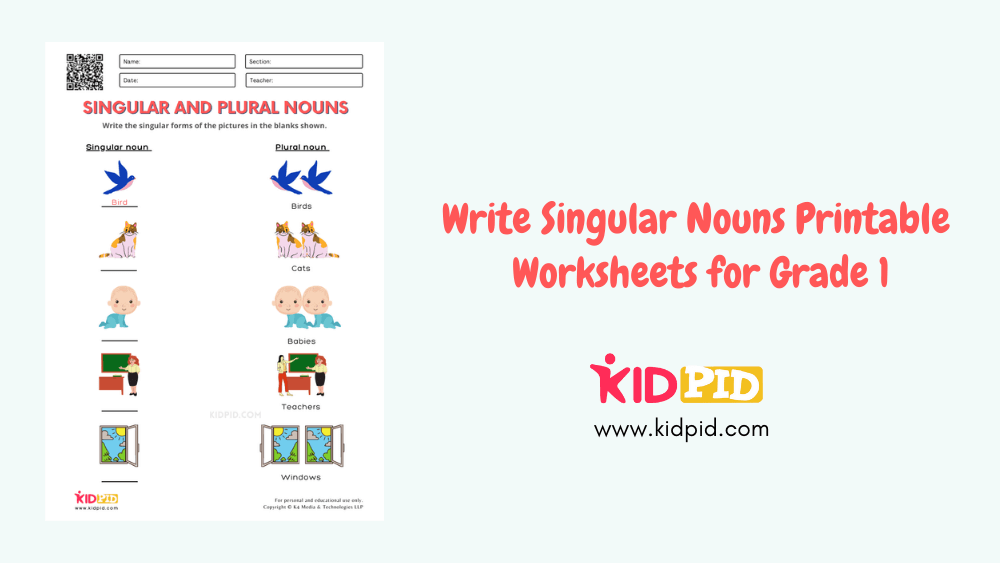
The noun is the name of a place, person, or thing. It is a word that names anything be it, abstract such as emotions like anger, jealousy, happiness, quantity, name, place, animals, or things. It is the naming word. In English grammar, the noun is the first of the eight parts of speech taught to kids when they begin learning the language. It is essential to be able to identify and differentiate between a noun and other parts of speech. Similarly, there are several rules that one needs to keep in mind while working with nouns. One such scenario is the use of singular and plural nouns. A singular form of a noun refers to a noun that is in the singular form. Ex: one car. On the other hand, the plural form is used to refer to a noun if there is more than one instance of the noun. Ex: Cars.
Generally, to write a noun in its plural form we need to add ‘s’ or ‘es’ at the end of the word. Thus, most singular nouns are made plural by simply putting an -s and -es at the end. But there are several exceptions too. There are several different rules regarding pluralization depending on what letter a noun ends in. These rules are as follows:
- We add ‑s to the end to make regular nouns plural. Ex: Car – Cars.
- If the singular noun ends in ‑s, -ss, -sh, -ch, -x, or -z, add ‑es instead of -s to the end to make it plural. Ex: Bus – Busses
- If the noun ends with ‘‑f’ or ‘‑fe’, the f is often changed to ‑ve, and -s is added to form the plural version. Ex: Wolf – Wolves
- If a singular noun ends in ‑y and the letter before the’ -y’ is a consonant, we change the ending to ‑’ies’. Ex: City – Cities.
- If the noun ends in ‑o, we add ‑es to make it plural. Ex: Potato – Potatoes
- If the singular noun ends in ‑us, the plural is made by adding ‘‑i’ at the end. Ex: Cactus – Cacti
- If the singular noun ends in ‑is, the plural ending is ‑es. Ex: Analysis – Analyses
- If the singular noun ends in ‑on, the ending of the plural form of the noun is-a. Ex: Phenomenon – Phenomena
Singular Nouns Practice Worksheet
In this edition, we bring to you several exercises for kids to practice writing words in their singular form.
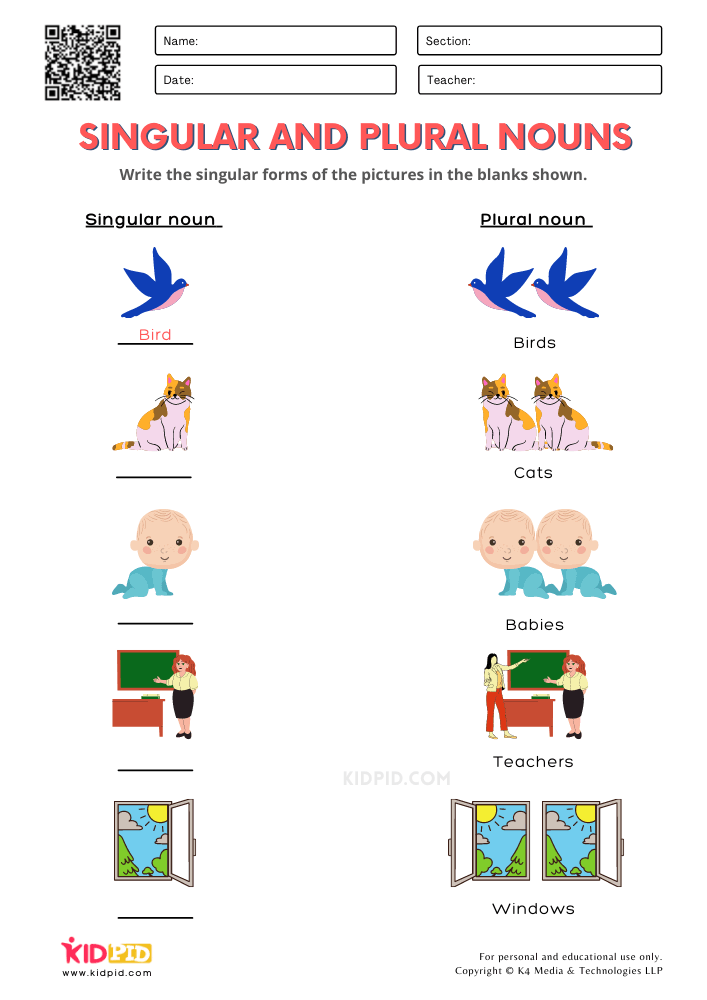
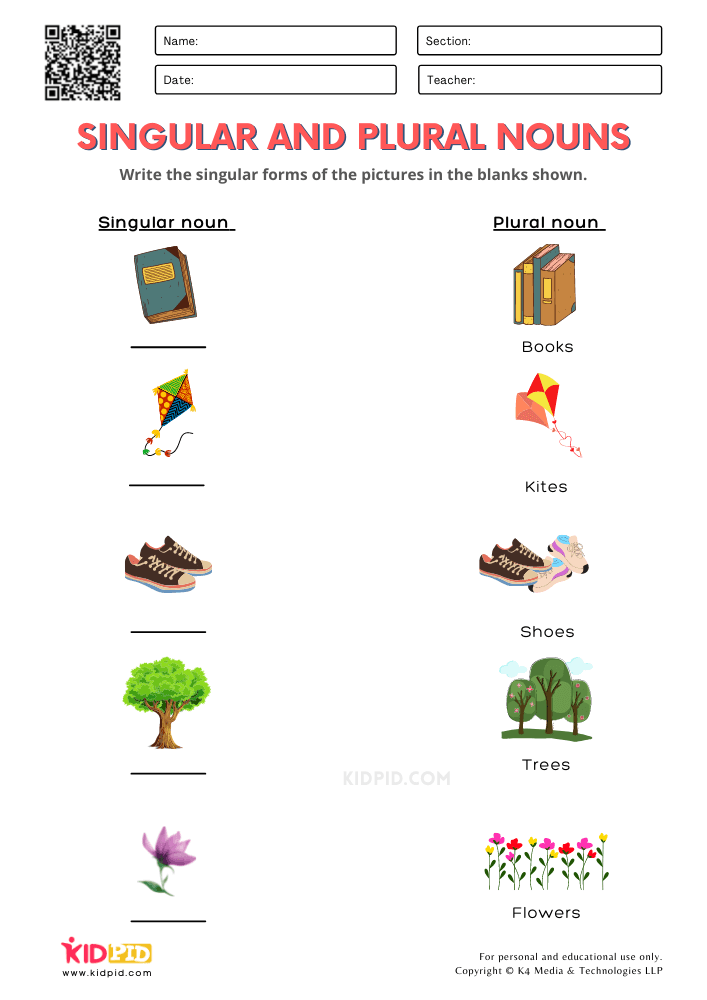
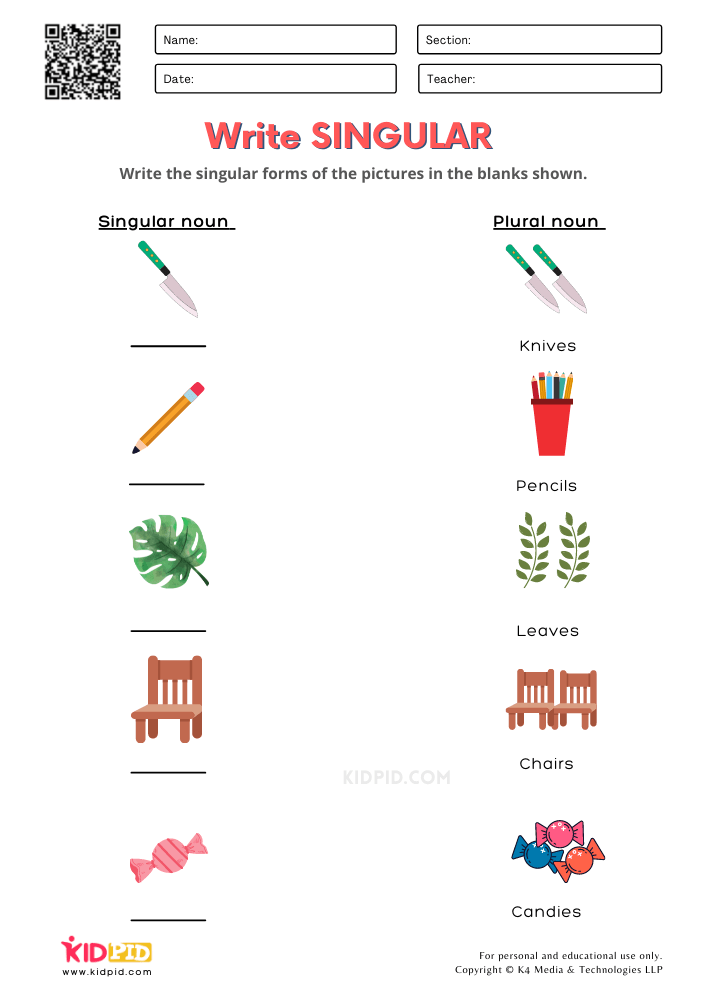
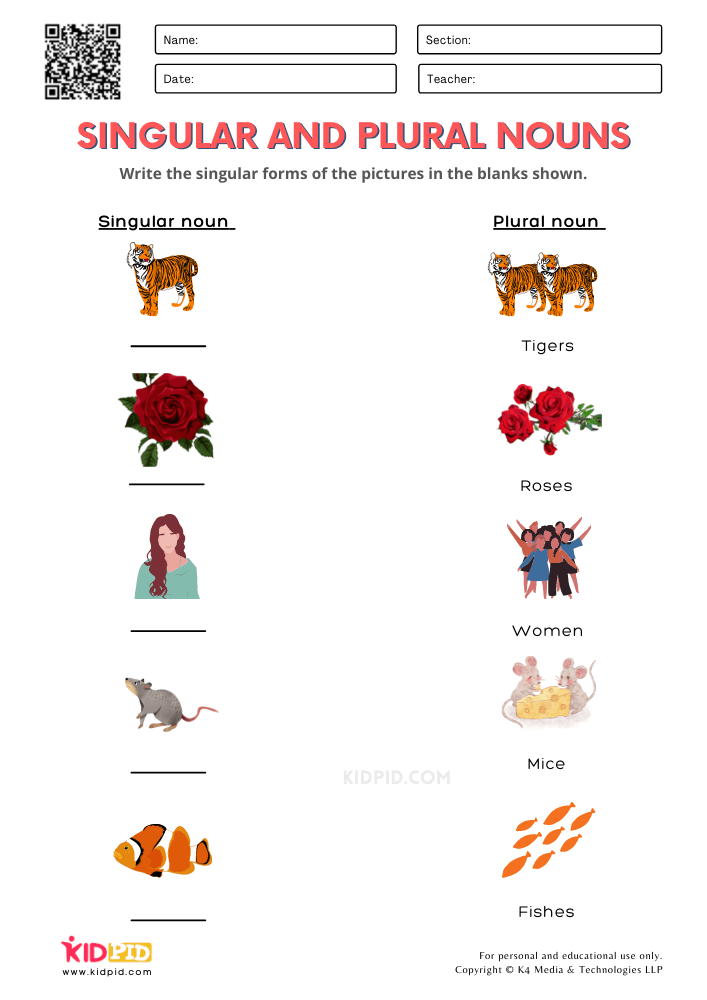
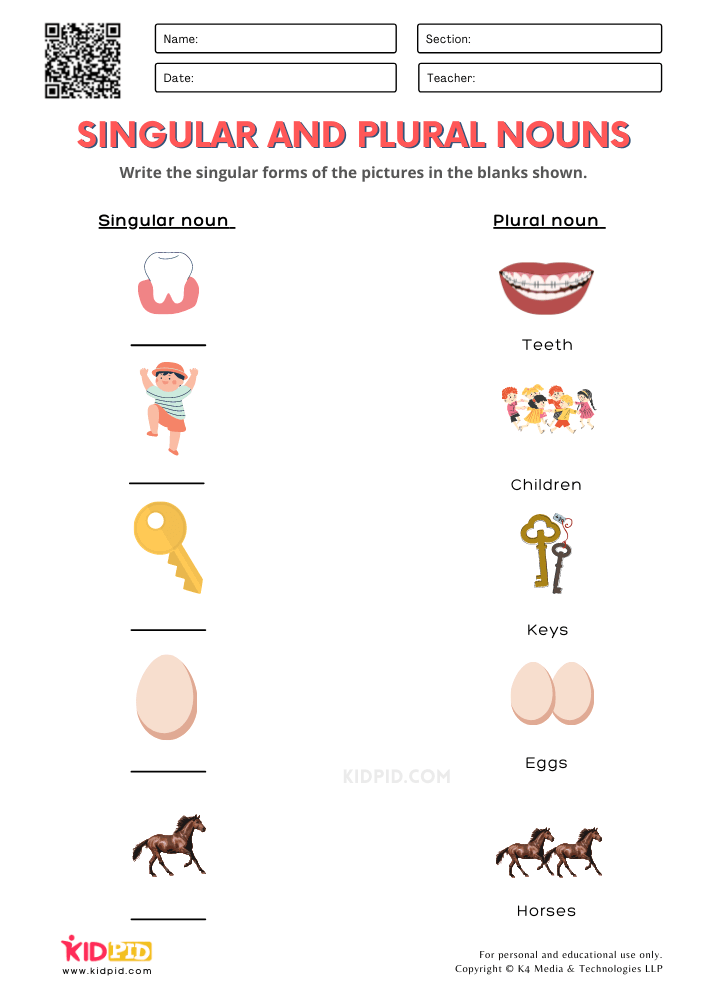
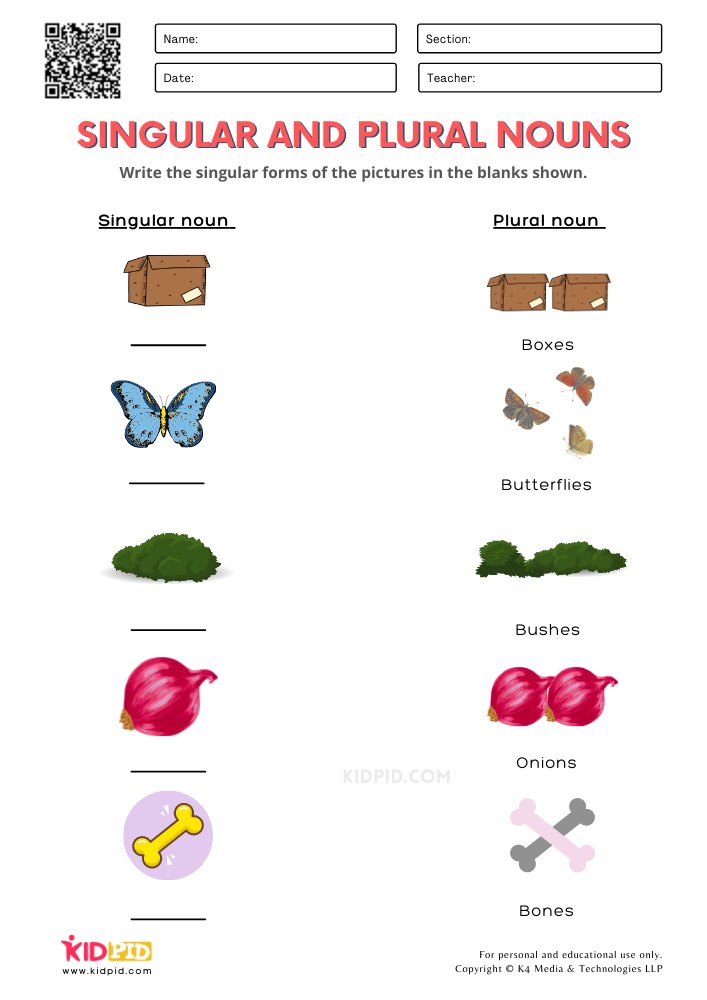
Download the worksheet and ask your kid to write the singular form of the words given in the worksheet by referring to the rules and instructions mentioned above. Download and get started now!
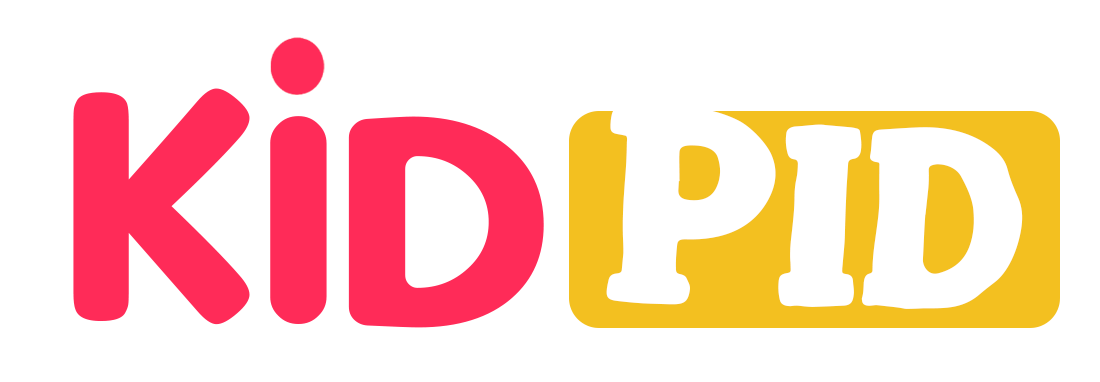
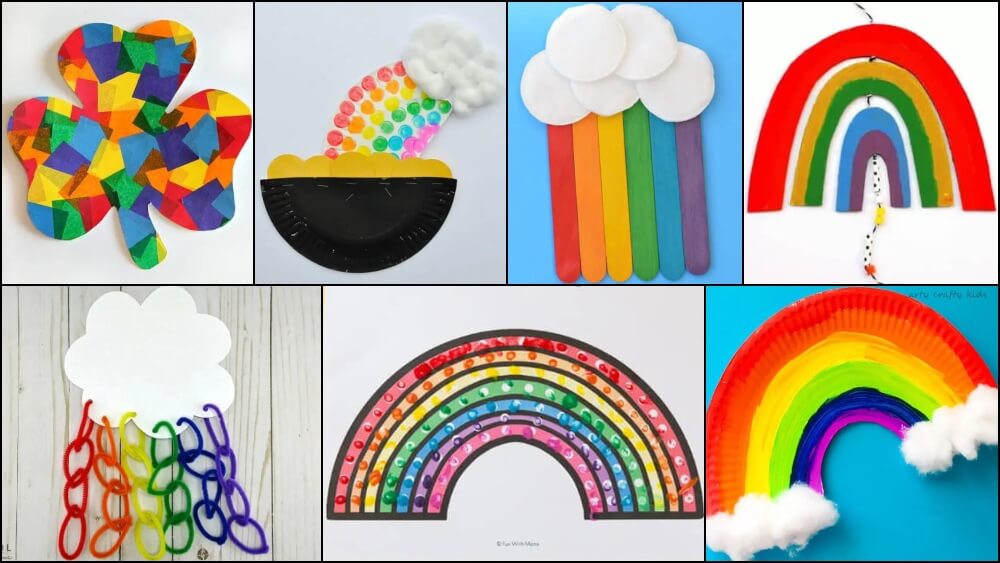
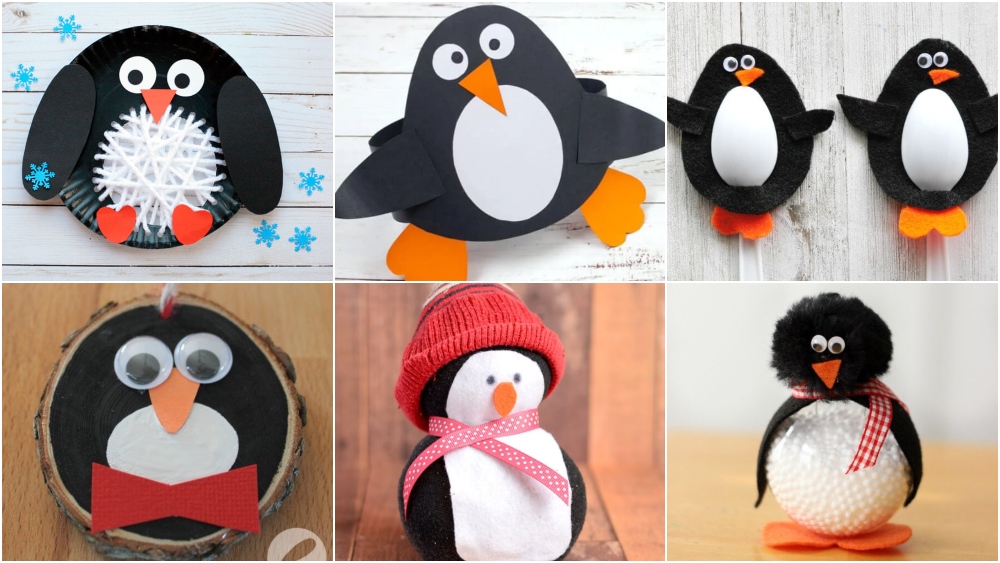

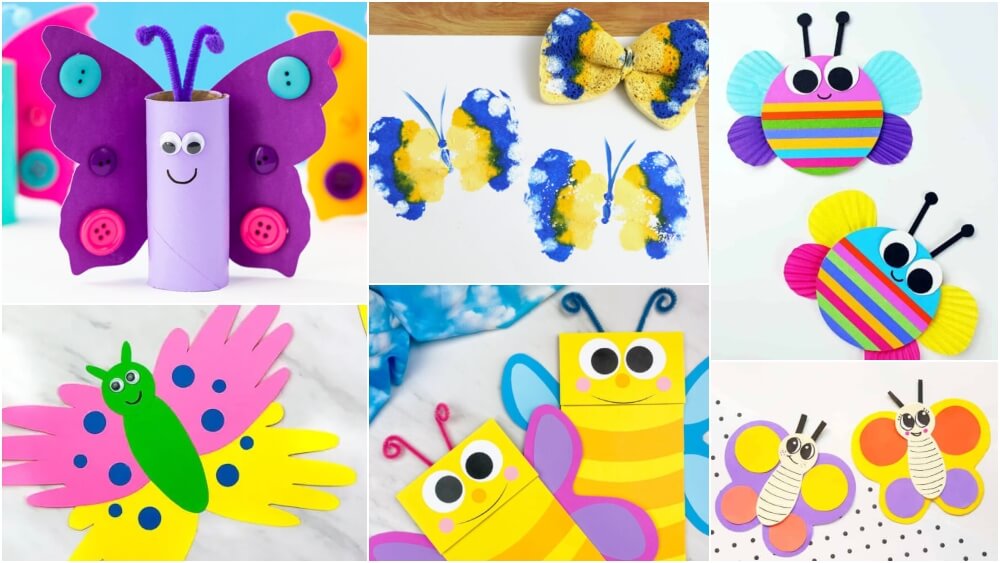

Responses